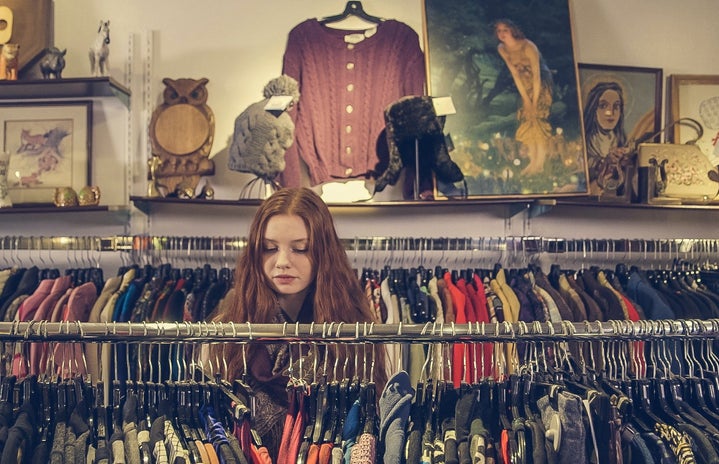From the humble establishments of the Salvation Army to hundreds of Instagram shops bearing the promise of ‘vintage’ items, thrifting has proven its relevance in the local fashion scene. A great alternative to fast fashion consumption, combined with many students’ shallow pockets and their instinctive desire for self-expression, the up and rising powerhouse of fashion doesn’t seem to be going anywhere anytime soon.
Originally popular among the hippies of the 1960s, thrifting resurfaced sometime in the 1980s and 1990s due to the growing popularity of music and style influences. With this newfound access to fashion knowledge, younger generations began exploring and developing their own sense of style, and along with this came the desire for fashion items that would aid them in achieving the perfect look. However, the innate limits of thrifted clothing, such as in size and design, led to a growing reliance on fast fashion chains such as Zara and H&M. Clothing then became easily accessible and affordable, and an uprise of overconsumption began.
With an influx of overconsumption came an adverse impact on the environment. In 2019, Singapore alone produced 168,000 tonnes of textile and leather waste, of which only a meager 4% underwent recycling. These statistics prove that as much as we combat the ocean’s pollution with reduced use of plastic, more can be done in our bid for a greener world through our commodities, with the amount and type of clothing we consume being one of them.
To gain a better understanding of the thrifting culture in Singapore, we interviewed the supervisor of a local thrift store, SSVP Shop* to find out more about what happens to thrift store clothing.
When asked more about how much wastage might be produced from the excess of sales in thrifting and how they dealt with it, the supervisor noted that while 3/4 of clothing does get sold, there is still excess. SSVP then takes this opportunity to send excess clothing to various organizations and to those in need. For example, during the pandemic, they sent excess clothing to the migrant workers in the dormitories who needed more clothing. They’ve even sent excess clothing overseas with mission groups!
However, despite this fantastic news to reduce waste and provide for the less fortunate, the shop’s supervisor noted that as a community we should change our lifestyles to be more sustainable. When asked how we could keep thrift shopping (and thus sustainable living) alive, he mentioned,
“We should encourage it as a lifestyle — don’t need to buy anything new. We need to spread awareness (of this lifestyle) so that more and more people will be willing to buy second hand.”
In Singapore’s battle toward being more eco-friendly and sustainable, it would be useful if we were to make changes to our perspectives toward thrift shopping and make a habit out of not only donating but buying clothes from thrift shops. That way, we would be able to create a cycle of reusing textiles and only disposing of them after their last breaths. Imagine how much waste we would eventually reduce!
This was brought up by the supervisor during the conversation, who mentioned, “We are new to this thrift shop business. As we grow, we notice that customer mentalities have changed. Some are more familiar with thrifting, so their minds are more open. They know that second-hand clothes are not perfect, so shopping is more pleasant because they know what to expect. Those who are new to thrifting expect clothing to be new despite the lower prices. The mentality shift is important so that everyone can enjoy their thrift shopping experience.”
If we haven’t convinced you enough yet, here are 4 reasons why we should explore thrifting more:
- Reduces pollution on the environment
-
The fast fashion industry alone contributes to 10% of global carbon emissions during its production, manufacturing, and transportation of garments. By reducing our demand for fast fashion items, we’re making a conscious effort to reduce supply production and its effects.
- Encourages conscious buying
-
Conscious buying occurs when you are aware of what you buy and how it affects society at large. In spending time donating clothes and buying pre-loved items, we become more aware of the number of clothes we buy and use from fast-fashion outlets.
- Decluttering made affordable
-
While many of us work toward more minimalist and sustainable ways of living, we donate our clothes to thrift shops. It’s both a great way to declutter and gain inexpensive, quality pieces of clothing!
- A great way of self-expression
-
With the pandemic in full swing and mask-wearing becoming the norm, clothing is the next best thing to a daily creative outlet. From spunky neons to punk and grunge, thrift stores are the best place for novelty pieces to spice up traditional basics at a wallet-friendly price.
It seems that in order for us to move toward lasting sustainability, we have to do more than just decluttering our dressers. While donating clothes away to be reused is certainly part of the process, it is crucial that we move away from buying fast fashion items and toward thrift shops to reduce the number of textiles produced and thus wasted eventually. By keeping what can still be used and only throwing it away when needed, we contribute to a circular fashion economy that reduces its reliance on raw materials while working on ourselves and our purchasing habits. And with the many benefits of thrifting, why shouldn’t we?
*SSVP Shop is a social enterprise of the Society of St Vincent de Paul (SSVP) Singapore.



